I have already written an article on what to look out for when buying a windsurf board. However, aside from the fact that you will always have more sails than boards at any given time, sails also wear easier and so have to be replaced more often. Therefore, I thought a windsurf sail buying guide might be in order. Here are the things to look out for when buying a sail.
Windsurf Sail Buying Guide
Where will you be sailing?
This is always the first question you should be asking yourself when buying equipment. A sail meant for planing in 10 knots on a lake will not meet the requirements of sailing on the ocean with a 1.5m shore break.
Sail size
The previous question will only partly answer this aspect. Most people have 3 or 4 sails. Professionals will need more. Depending on where you will be windsurfing you need a different sail range. In El Médano it is usually something along the lines of 4.0, 4.7 and 5.3. However on some lakes 6.0 might be the smallest sail.
Basically focus on the most common wind speed at the spot where you would be sailing and go for a sail that matches those conditions to your weight and skill.
What other sails do you have?
If you are buying a second sail to increase your wind range it should go without saying that you have to make sure that the size gap between the sails is not too small and not too big. If you already have a 4.5m sail, you probably don’t need a 4.7m. On the other hand, a 5.7 may be too big a gap. In this case a 5.3 might be the right step.
This all depends on what winds you want to sail in, what budget you have to work with and how much tuning you want to do on each sail. Some people can do with 3 sails, others prefer the confort of having 4 or 5 and yet another prefer to travel with just 2.
Sail type
Again, after having answered the first question you will also be closer to knowing the type of sail you want. Usually your first sail will be an all round sail, like a freeride sail with no cambers. Something that is not specific to any one type of wind and wave conditions but that works well enough in all of them.
Later, after having tested other sail types you will get a better feel for whether you need more of a wave sail or if a sail cut for slalom is right for you.
Compatibility with existing mast and boom
I have helped choose a sail for quite a few people that already had a mast and boom. Sometimes it was because a friend had given them away, because they were on offer or because they already had a sail and were now buying their second or third sail.
In this case you want to see if you can buy a sail that can be used with the mast and boom you already have. The benefits are that you save money one the one hand, and you have less stuff to carry around on the other.
Mast-sail compatibility is often overlooked. I often mention how manufacturers have a very specific shape in mind for a sail so that it performs well and the length and stiffness of the mast has huge impact on achieving the perfect sail profile. The wrong mast can make a good sail perform bad. In short, make sure that the mast you are going to use for your new sail has the properties that the sail needs. If you don’t have such a mast, invest in getting it as it makes a world of difference.
Fixed mast top or vario top
This ties in to the previous point. Some sails have a variable top so you can also use a mast that is longer than the ideal. This is a useful fact to keep in mind when buying a second sail. Does the mast you have for your first sail need an extension because it is too short for the new sail? Or is your mast too long for the new sail? In that case the sail should have a variable top.
A quick side note here: the sails are designed to be used with a specific mast length, stiffness and extension in mind. If we use a longer mast on a sail with a variable top, the performance of the sail will be less than optimal. I try to not have the mast be more than 15cm too long. Anything above that I prefer to use a shorter mast with an extension.
Brand
Aside from the different types of sails, depending on the brand and the model of the sail you will feel more or less comfortable. Some brands build their sails to be more direct and responsive while others absorb gusts better. I personally like to windsurf with a sail in which you feel the power right away while others prefer “softer” sails with which they are less likely to get catapulted in an unexpected gust.
This part is, in my opinion, why you should always test the sail before you buy it. Also, be sure to keep in mind that choosing the correct fin, board and mast are just as important as choosing the sail because they all have to work well together. Before you check out the next post on what to look out for when buying a used windsurf sail, I want to leave you with a post by rigitrite on the iWindsurf community forum:
Gear is expensive, especially boards and sails. However, they can last a really long time, and equipment in the last 15 years has remained virtually unchanged in basic technology, and quality. As a beginner, you should buy used and find what will help you improve without breaking the bank.
Once you decide that you really want to take up the sport and keep going, you should invest in a quiver. Having a set of sails, all from the same manufacturer and of the same model in different sizes will make everything much much easier. The first major $$$ I ever spent on new equipment was my first quiver of sails.
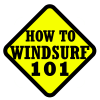
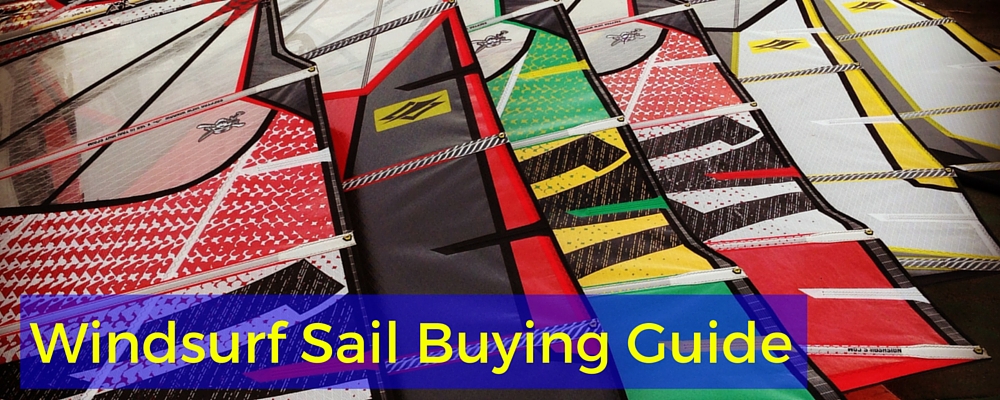

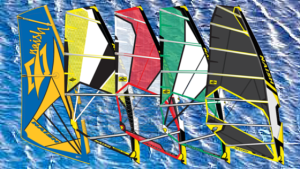
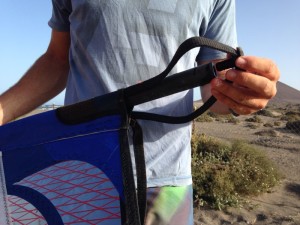
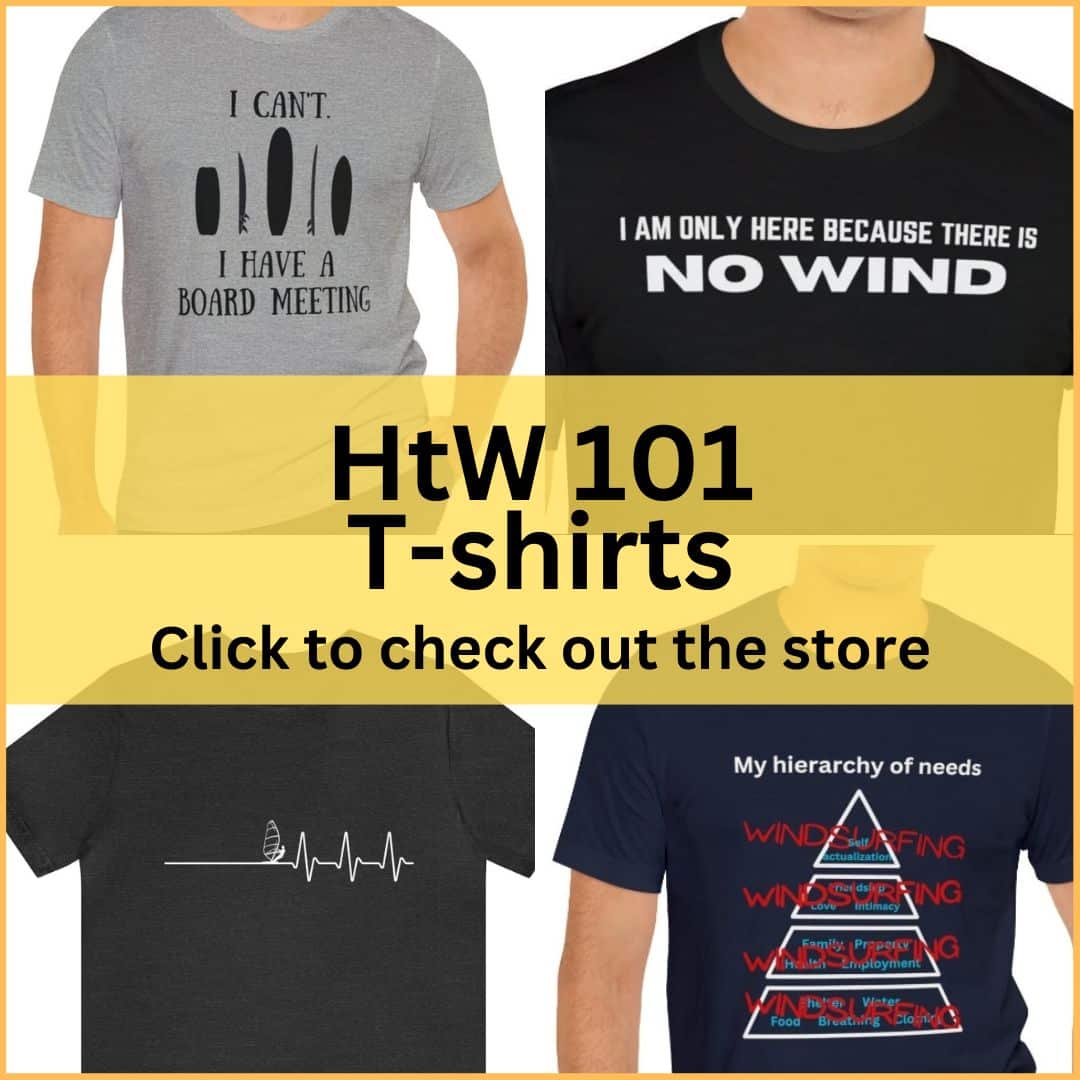
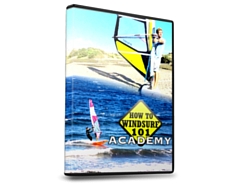
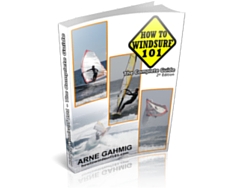
Hi, new at windsurfing here! I’m a little confused on a sail sizing chart. It lists kg, the windspeed, but then for the size of the sail it lists (for example) 12,6. Then under the next level up 3,6. Is the comma suppose to be a point or is it suggesting a 3m OR 6m. Here is a link to the chart.
http://www.surfertoday.com/board-size-chart/windsurf